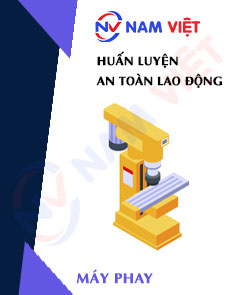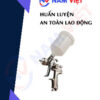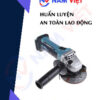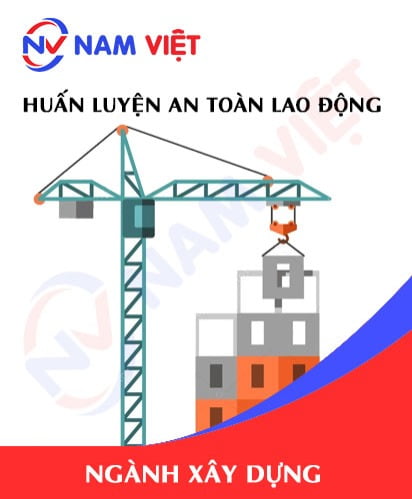Occupational Safety Training for Milling Machine Operation
99,000 ₫
Note: The price above is calculated per person and may fluctuate depending on the number of participants in the course and market conditions. For more accurate pricing support, please refer to the price list or contact our consulting staff directly.
Occupational safety is an important issue when operating a milling machine and must be addressed promptly to ensure the health and safety of workers and enhance the reputation of businesses here. The Occupational Safety Training course is one of the effective solutions to raise awareness of how to prevent workplace accidents for workers operating a milling machine.
Table of Contents
Toggle1. Overview of Milling Machines
a. What is a Milling Machine?
A milling machine is an industrial device used to remove material from a flat surface using a rotating cutting tool. This process is commonly called milling. Milling machines can be used to work on materials such as metal, wood, plastic, and many others.
The main tool in a milling machine is a milling cutter or an end mill, which has cutting teeth on its surface. The cutter or end mill rotates and advances into the material to create cuts by removing a small amount of material at a time. Milling machines can be used to create flat surfaces, slots, holes, and other complex shapes on workpieces.
There are various types of milling machines, including horizontal, vertical, and universal milling machines, each suitable for specific applications. Milling machines are essential tools in manufacturing and mechanical engineering, helping produce high-precision parts that meet strict design requirements.

b. Operating Principles of a Milling Machine
The operation of a milling machine involves removing material from a surface using a rotating cutting tool. Here is an overview of how a milling machine works:
- Selecting the cutting tool: First, choose a cutting tool suitable for the specific job. This could be a milling cutter or an end mill, selected based on the material and shape of the workpiece.
- Mounting and positioning the tool: The cutting tool is attached to the milling machine head and positioned appropriately on the machine table to ensure proper contact with the workpiece.
- Rotating the tool and feeding into the workpiece: The milling machine uses a motor to rotate the cutting tool and advance it into the workpiece. The cutting edges remove material during this process.
- Performing milling operations: The machine can perform various operations such as surface milling, slotting, drilling, and shaping complex contours. Rotation speed and feed rate are adjustable to meet specific requirements.
- Machine control: Milling machines are often controlled via numerical control (NC) or computer numerical control (CNC) to ensure high precision. Pre-programmed commands guide the machine during operation.
- Finishing the workpiece: Once milling is complete, the machine stops, and the cutting tool is retracted. The finished workpiece can then be used in different industrial applications.

c. Industries Using Milling Machines
Milling machines are versatile industrial equipment used across many industries. Some key industries and applications include:
- Mechanical engineering and manufacturing: Used for machining metal parts such as engine blocks, aircraft components, automotive parts, and other high-precision items.
- Woodworking: Used to shape and finish wood products, including furniture, plywood, and other wooden items.
- Metal casting: Used to machine cast products to achieve precise surfaces and remove excess material.
- Machinery manufacturing: Essential for producing machine components, from screws and bearings to complex parts.
- Medical industry: Used for machining precise components for medical devices and diagnostic equipment.
- Aerospace: Critical for producing high-precision parts and structures where accuracy and safety are paramount.
- Industrial equipment manufacturing: Used in producing machinery and equipment for various industrial sectors.
2. Overview of Safety Training for Milling Machine Operation
a. What is Occupational Safety Training?
- Occupational safety training for milling machine operation consists of sessions designed to raise awareness about preventing workplace accidents. Workers directly operating milling machines fall under Group 3.
- The training helps workers identify and prevent hazards, reducing the risk of workplace accidents.
REGISTER FOR OCCUPATIONAL SAFETY TRAINING
b. Training Duration
Initial safety training:
- Total training time is at least 24 hours, including testing.
- 8 hours of theory on safety policies and regulations
- 8 hours of basic occupational safety knowledge
- 4 hours of theory on specialized training content
- 2 hours of practical training on specialized content
- 2 hours of final theory exam
The training center may split the schedule into multiple sessions depending on worker availability. Typically, there are 6 sessions over 3 days if continuous attendance is possible.
Periodic safety training:
- Before the safety card expires, workers seeking renewal must attend periodic occupational safety training, with training duration of at least 50% of the initial course.
Explanation: Total periodic training time is at least 12 hours, including testing. After completion and passing the exam, workers will have their safety card renewed.
c. Training Content
| No. | TRAINING CONTENT | TRAINING HOURS | |||
| Total | Breakdown | ||||
| Theory | Practice | Exam | |||
| I | Safety Policies and Regulations | 8 | 8 | 0 | 0 |
| 1 | Overview of the legal and regulatory framework on occupational safety and hygiene. | 6 | 6 | ||
| 2 | Standards and technical regulations for occupational safety and hygiene. | 1 | 1 | ||
| 3 | Specific regulations from state agencies on occupational safety when constructing, expanding, or upgrading facilities, and for using, storing, and inspecting machines, equipment, and hazardous materials. | 1 | 1 | ||
| II | Basic Occupational Safety Knowledge | 8 | 8 | 0 | 0 |
| 1 | Basic knowledge of workplace hazards. | 4 | 4 | ||
| 2 | Methods to improve working conditions. | 1 | 1 | ||
| 3 | Safety culture in production and business. | 1 | 1 | ||
| 4 | Rights and responsibilities of employers and employees; safety policies; roles of safety officers. | 1 | 1 | ||
| 5 | Safety rules, signage, protective equipment usage; first aid, accident prevention, and occupational disease awareness. | 1 | 1 | ||
| III | Specialized Training Content | 6 | 4 | 2 | 0 |
| Comprehensive knowledge of machines, equipment, and hazardous materials; risk assessment, safe operating procedures, and management of safety and hygiene requirements. | 6 | 4 | 2 | ||
| IV | Final Safety Exam | 2 | 2 | 0 | 0 |
| Total | 24 | 22 | 2 | ||
See more training content for all 6 groups
d. Occupational Safety Card
After completing the training and passing the exam, workers will be issued a safety card (commonly known as Group 3 occupational safety certificate).
The Group 3 safety card includes personal information such as name, date of birth, job, work environment, training hours, red seal, and signature confirming course completion.
According to Clause 2 of Article 24 of Decree 44/2016/ND-CP, there are two cases:
- If the worker has an employment contract, the employer must sign, stamp, and validate the safety card after the worker completes the training and passes the exam.
- If the worker is freelance or seasonal with no employment contract, the training provider must sign, stamp, and validate the safety card after the worker completes the training and passes the exam.

3. Hazards When Operating a Milling Machine
When operating a milling machine, there are several hazards that can occur if safety rules and protective measures are not followed. Here are some common hazards when operating a milling machine:
- Injury from cutting tools: Cutting tools in a milling machine, such as milling cutters or drill bits, can cause serious injuries if not used correctly or if they are damaged. This hazard includes the risk of cuts, punctures, or impalement to the operator.
- Electrical hazards: Milling machines use electrical power and electromagnetism to operate. If the machine or its components are faulty or improperly handled, there is a risk of electric shock.
- Fire and explosion hazards: If the milling machine is used in environments with oil, flammable liquids, or gases, there is a risk of fire or explosion if safety measures are not followed.
- Noise and vibration: Milling machines generate high-intensity noise and vibrations, which can cause hearing damage and health issues if proper protection is not used.
- Dust exposure: Milling processes can create dust and flying debris, and without proper protection, workers may inhale metal or wood dust, which is harmful to health.
- Overheating hazards: Continuous operation of the milling machine may generate high temperatures. If not controlled, this can cause fires or other incidents.

4. Occupational Accident Control Measures When Operating a Milling Machine
To control occupational accidents while operating a milling machine, you need to follow these safety measures and rules:
- Training and instruction: Ensure workers are trained and understand how to operate the milling machine safely. Provide guidance on safety rules and the use of personal protective equipment (PPE).
- Use of PPE: Ensure everyone working near the milling machine wears appropriate PPE such as safety glasses, face shields, ear protection, gloves, protective jackets, and safety shoes.
- Machine and cutting tool inspection: Conduct regular inspections of the milling machine and cutting tools to ensure they are functioning correctly and not damaged. Replace worn or broken cutters or milling bits.
- Ensure a safe position: Identify safe positions for workers where they are not exposed to hazardous areas, such as the cutting tool operation zone.
- Dust control: Use dust extraction systems or fans to control dust and flying wood or metal debris. Ensure no dust or debris contaminates the workspace.
- Noise and vibration control: Implement measures to reduce noise and vibration, such as isolating the milling machine or using sound and vibration dampening solutions.
- Monitor machine condition: Keep track of the milling machine’s operation and turn it off if any issues or malfunctions occur.
- Check electrical and power systems: Ensure that electrical systems and power sources are functioning properly and do not pose a risk of shock or fire.
- Follow safety rules: Comply with all safety regulations recommended by the milling machine manufacturer and relevant industrial safety guidelines.
- Emergency support: Ensure emergency response systems and evacuation methods are available in case of incidents or accidents.
- Regular inspection of the milling machine to detect early safety issues such as wear, damage, or mechanical failure, reducing the risk of occupational accidents.
5. Benefits of Occupational Safety Training
An Toàn Nam Việt provides your business with the following benefits after completing occupational safety training courses according to Decree 44/2016/ND-CP on Occupational Safety and Hygiene for companies and enterprises:
- Workers can recognize potential occupational hazards and take preventive measures to avoid accidents.
- Your business can establish risk prevention measures in production, operation, and maintenance processes.
- Minimize costs associated with safety risks in labor operations.
- Uninterrupted production increases labor productivity and product quality.
- Comply with occupational safety laws, reducing legal risks.
- Enhance credibility and professionalism, boosting your company’s brand.
Nam Việt training courses provide practical solutions to help individuals avoid hazards that could result in injuries or fatalities.
REGISTER FOR OCCUPATIONAL SAFETY TRAINING SERVICE
6. Customer Feedback After Completing Training
An Toàn Nam Việt has many years of experience accompanying enterprises across Vietnam, particularly in the southern provinces. This responsibility is highly valuable to Nam Việt, which is why our Occupational Safety Training programs are increasingly professional. The growth and success of Nam Việt are driven by positive feedback and suggestions from our clients. Below are some testimonials from our partners.
Hoa Dat Construction & Trading Joint Stock Company
“Nam Việt’s services greatly simplified occupational safety and the completion of safety documentation for our operations. The consulting team responded promptly to all our inquiries. 5 stars for Nam Việt.”
See more customer interviews after using our services at An Toàn Nam Việt
7. An Toàn Nam Việt’s Occupational Safety Training Capability
An Toàn Nam Việt is a reputable and high-quality occupational safety training center in Vietnam, conducting continuous training at factories, workshops, or construction sites across all 63 provinces in Vietnam.
REGISTER FOR OCCUPATIONAL SAFETY TRAINING SERVICE
Occupational Safety Training License
- An Toàn Nam Việt has been inspected and certified by the Department of Safety under the Ministry of Labor – Invalids and Social Affairs, confirming our qualifications for occupational safety and hygiene training. This strengthens our capacity in occupational safety training.

Training Materials and Lectures
- Before being used in OHS training courses, training materials are reviewed to ensure accuracy and effectiveness.
- Our instructors follow teaching methods standardized by An Toàn Nam Việt, developed by occupational safety experts to maximize knowledge retention for trainees.
Facilities
- Control of classroom factors improves training efficiency and trainee comprehension.
- Our training facilities provide spacious classrooms with adequate lighting and equipment.
8. Nationwide Reputable Safety Training Center
At An Toàn Nam Việt, we prioritize professional occupational safety training. We carefully prepare every detail, from teaching tools, equipment, curriculum, materials, audio, to lighting.
Our instructors are experts with years of experience and research in hazard identification and prevention across industries. Lessons are practical, vivid, and easy to understand, ensuring workers comfortably acquire knowledge in accordance with Decree 44/2016/ND-CP.
Our training center is proud to provide professional, reliable occupational safety training with advantages:
- Competitive training costs while maintaining quality.
- Flexible training schedule aligned with company operations.
- Quick, legal certification procedures.
- Experienced instructors.
- Classrooms optimized for teaching efficiency and knowledge absorption.
- Lessons tailored to occupational safety in enterprises.
- Dedicated and professional support for clients.

9. Additional Occupational Safety Training Materials
- Safety materials for operating a milling machine
- Occupational safety training materials set
- Occupational safety training test set
- Milling machine occupational safety quiz
- Milling machine occupational safety training slides
10. Occupational Safety Training Activities
1 review for Occupational Safety Training for Milling Machine Operation
No comments yet















phanminhhang341
Dịch vụ tốt!!!